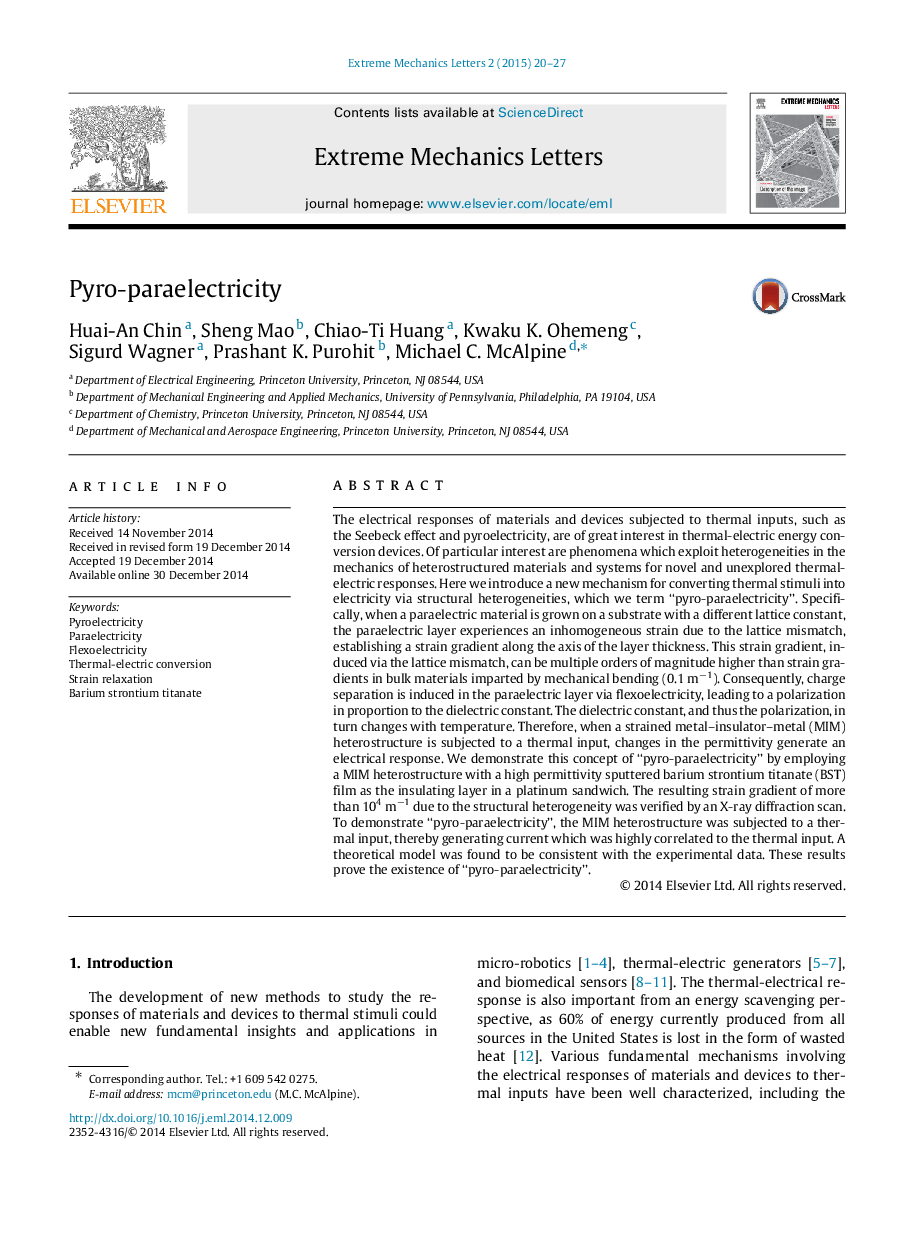| Article ID | Journal | Published Year | Pages | File Type |
|---|---|---|---|---|
| 778499 | Extreme Mechanics Letters | 2015 | 8 Pages |
The electrical responses of materials and devices subjected to thermal inputs, such as the Seebeck effect and pyroelectricity, are of great interest in thermal-electric energy conversion devices. Of particular interest are phenomena which exploit heterogeneities in the mechanics of heterostructured materials and systems for novel and unexplored thermal-electric responses. Here we introduce a new mechanism for converting thermal stimuli into electricity via structural heterogeneities, which we term “pyro-paraelectricity”. Specifically, when a paraelectric material is grown on a substrate with a different lattice constant, the paraelectric layer experiences an inhomogeneous strain due to the lattice mismatch, establishing a strain gradient along the axis of the layer thickness. This strain gradient, induced via the lattice mismatch, can be multiple orders of magnitude higher than strain gradients in bulk materials imparted by mechanical bending (0.1 m-1). Consequently, charge separation is induced in the paraelectric layer via flexoelectricity, leading to a polarization in proportion to the dielectric constant. The dielectric constant, and thus the polarization, in turn changes with temperature. Therefore, when a strained metal–insulator–metal (MIM) heterostructure is subjected to a thermal input, changes in the permittivity generate an electrical response. We demonstrate this concept of “pyro-paraelectricity” by employing a MIM heterostructure with a high permittivity sputtered barium strontium titanate (BST) film as the insulating layer in a platinum sandwich. The resulting strain gradient of more than 104 m-1 due to the structural heterogeneity was verified by an X-ray diffraction scan. To demonstrate “pyro-paraelectricity”, the MIM heterostructure was subjected to a thermal input, thereby generating current which was highly correlated to the thermal input. A theoretical model was found to be consistent with the experimental data. These results prove the existence of “pyro-paraelectricity”.
